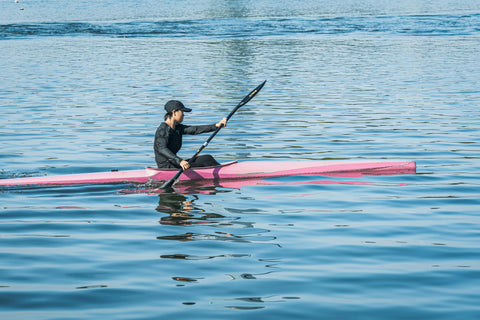
Game-Changing Gloves: 2025 Innovations in Sports Glove Technology
From improving grip in golf gloves to enhancing protection in football gloves, the latest wave of innovations in sports gloves is reshaping what athletes expect from their handwear. Suppliers and researchers are pushing materials science, wearable tech, ergonomic fit, and even smart electronics. If you care about gloves, the new advances are worth a look.
“Glove design must be built around the human hand as the centerpiece, not just the branding or superficial styling,” says Dr. Maria Lopez, a biomechanical engineer specializing in wearable sports gear. And as material scientist Dr. Kevin Bryant puts it: “If the glove doesn’t move with you, you end up fighting the glove, not your sport.”

Smart Sensing and Personalized Fit
One of the most dramatic shifts in glove technology is toward tactile sensing and personalized fit. A very recent study, “Fits like a Flex‑Glove: Automatic Design of Personalized FPCB‑Based Tactile Sensing Gloves,” introduces an automated method of generating gloves embedded with resistive sensors via flexible printed circuit board (FPCB) technology. The glove design is derived from simple hand photos and costs under US$130 per glove, making advanced sensing more accessible.
Similarly, smart textile gloves (stretchable, washable, embedded with inertial measurement units (IMUs) and sensor yarns) can now track complex hand and finger motion with high accuracy. This is huge for sports that demand precise hand movements, such as golf or ball‑handling in football.
Grip, Strength, and Protection
Grip remains foundational. A study on mixed martial arts gloves found that gloves can reduce grip strength by about 23% compared to bare hands. That suggests glove makers need to balance padding/protection with grip performance.
In football gloves, especially improved latex or synthetic palm surfaces, negative‑cut designs, and ergonomic wrist support are rising in popularity. These designs aim to reduce bulk, enhance control of the ball, and protect the hands during high‑impact moments without sacrificing dexterity.
Another domain: the comparison of protective gloves and how they affect grip strength and dexterity. A study showed that more protective styles (like structural firefighting gloves) significantly reduce manual dexterity, while general protective gloves vary depending on type. And yet another focusing on assistive devices used glove prototypes with varying wrist extension angles for propulsion in wheelchair racing, where a 45° extension glove gave better stability without compromising technique.
Material Innovation and Sustainability
Lightweight, durable, and sustainable materials are trending these days. Smart composites, hybrid textiles (combining leather, synthetics, breathable fabrics), and even recycled components are being used to address both performance goals and environmental concerns.
For golf gloves, materials that maintain grip in wet and dry conditions are becoming more advanced. When discussing sports gloves, players increasingly expect water resistance, stretch where needed, yet toughness in the palm and fingers. Brands are answering with more technical leathers, coated synthetics, and treated fabrics.
Ergonomics, Fit, and Comfort
Fit is no longer an afterthought. Researchers studying glove fit have shown that finger length, palm circumference, wrist flexibility, and fit across fingers all significantly impact grip strength and dexterity. Slow‑poke or ill‑fitting gloves cause fatigue, reduce control, and may lead to injury.
Also, ergonomic pattern drafting methods that account for 3D hand anthropometry and finger mobility are being used. A paper introduced a method to draft glove patterns that better conform to the shape and motion range of hands.

Real‑World Applications and Brand Moves
Brands are applying all this in their product lines. You’ll see new models of football gloves that are lighter, with less restrictive wrist cuffs and more articulated finger constructions. On the golf end, gloves are being made with treated Cabretta leather, synthetic hybrids, and innovations to keep them smelling better, drying faster, resisting mildew, while still offering excellent grip.
Experts in sports equipment design are increasingly collaborating with athletes, physiologists, material scientists, and even robotics engineers to refine gloves not just for performance but for injury prevention, sustainability, and long‑term cost of use.
The Hands Down Winners
The best gloves will be those that blend protection, grip, fit, and intelligence without compromise. If you’re chasing the best golf gloves, look for those whose palms balance tackiness with breathability. If you wear football gloves, seek gloves men’s versions designed with anatomy in mind so you get both impact protection and dexterity.
As Dr. Maria Lopez reminds us, the future of sports gloves is not in flashy logos but in invisible innovations: sensors small enough to disappear, materials light enough to forget, fit so precise it feels custom. The revolution is in what you don’t see—and how you feel when you wear them. Whether you swing a club, grip a ball, or catch a pass, the latest gloves are game‑changers you’ll notice in every move.
About the Author

Wolph Uk
We bring you informative sports & travel tips, to help you stay active and achieve your lifestyle goals.
1 comment
-
Sport Spot LLC
Great read! Really liked how clearly you explained the different types of sports gloves and what they’re best for. The grip and material tips were especially useful. Thanks for the helpful breakdown!



